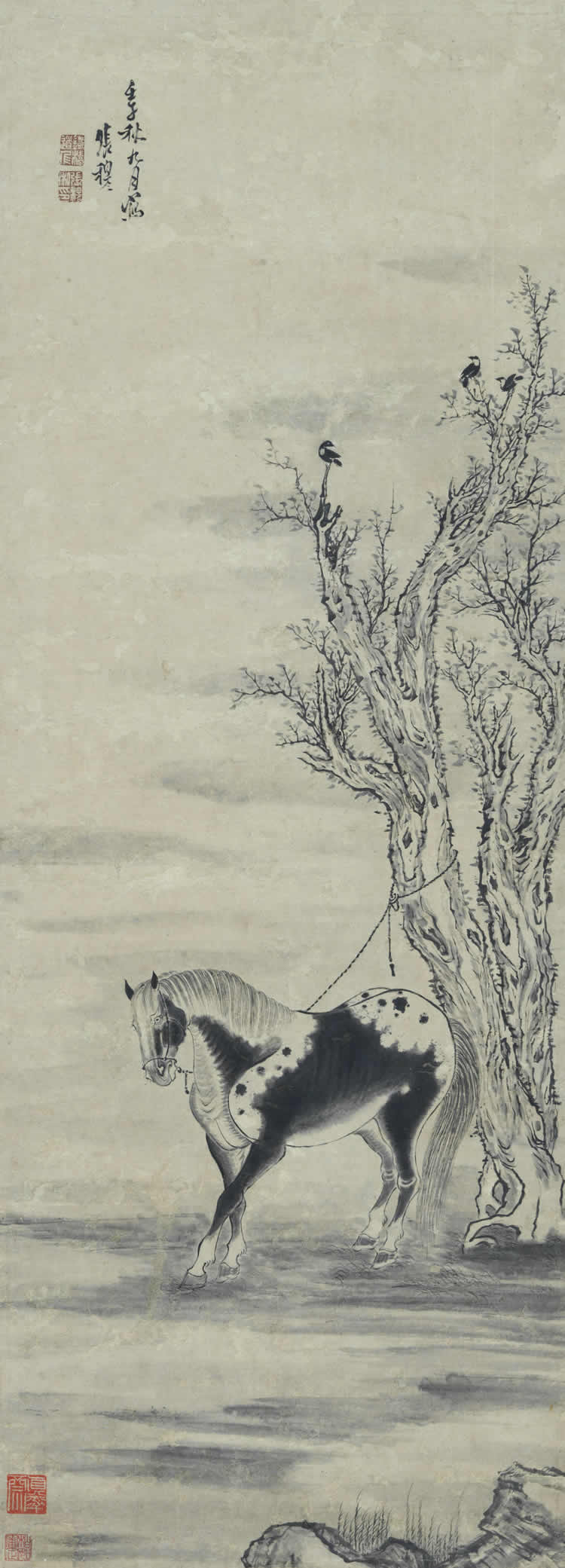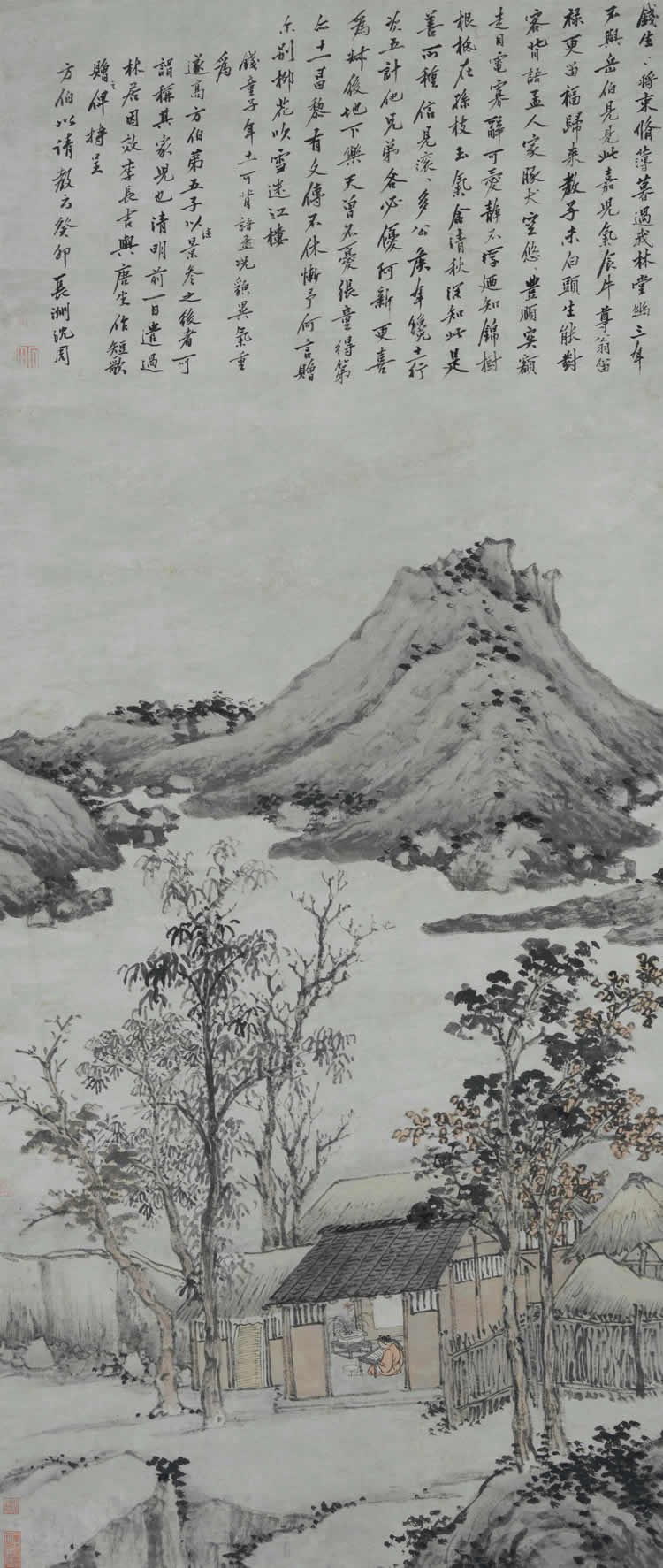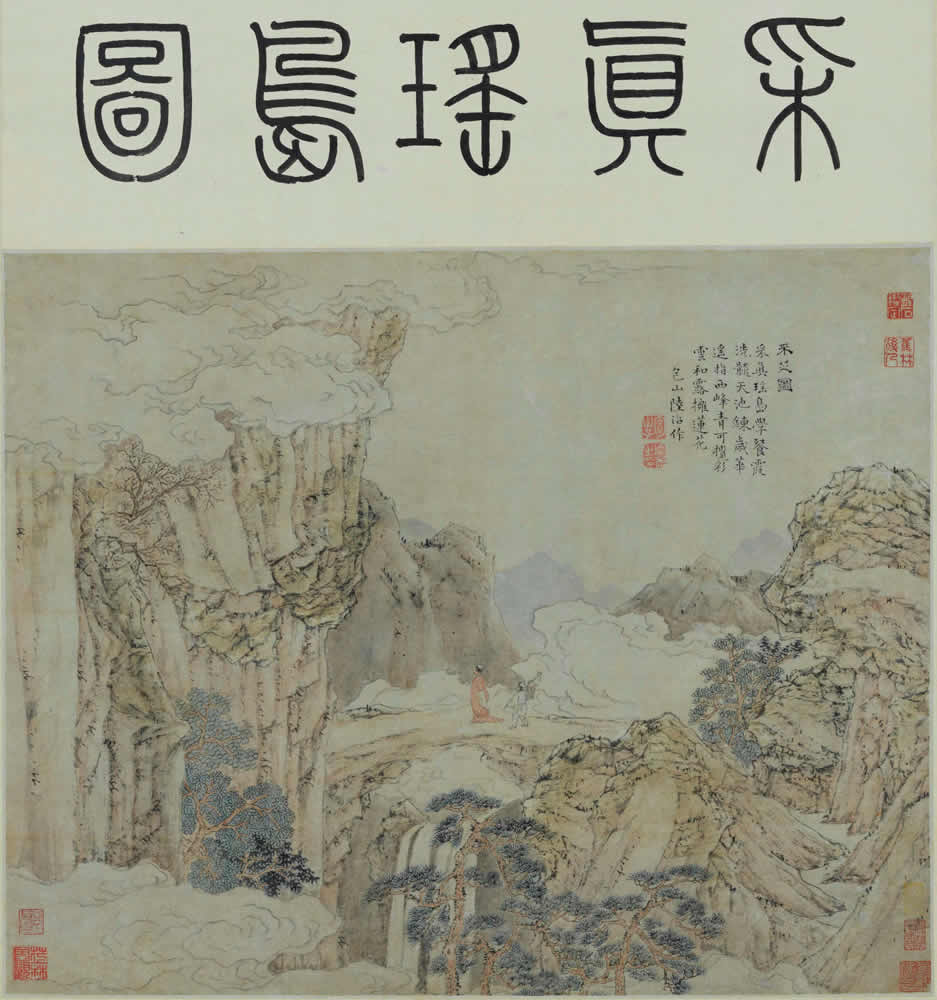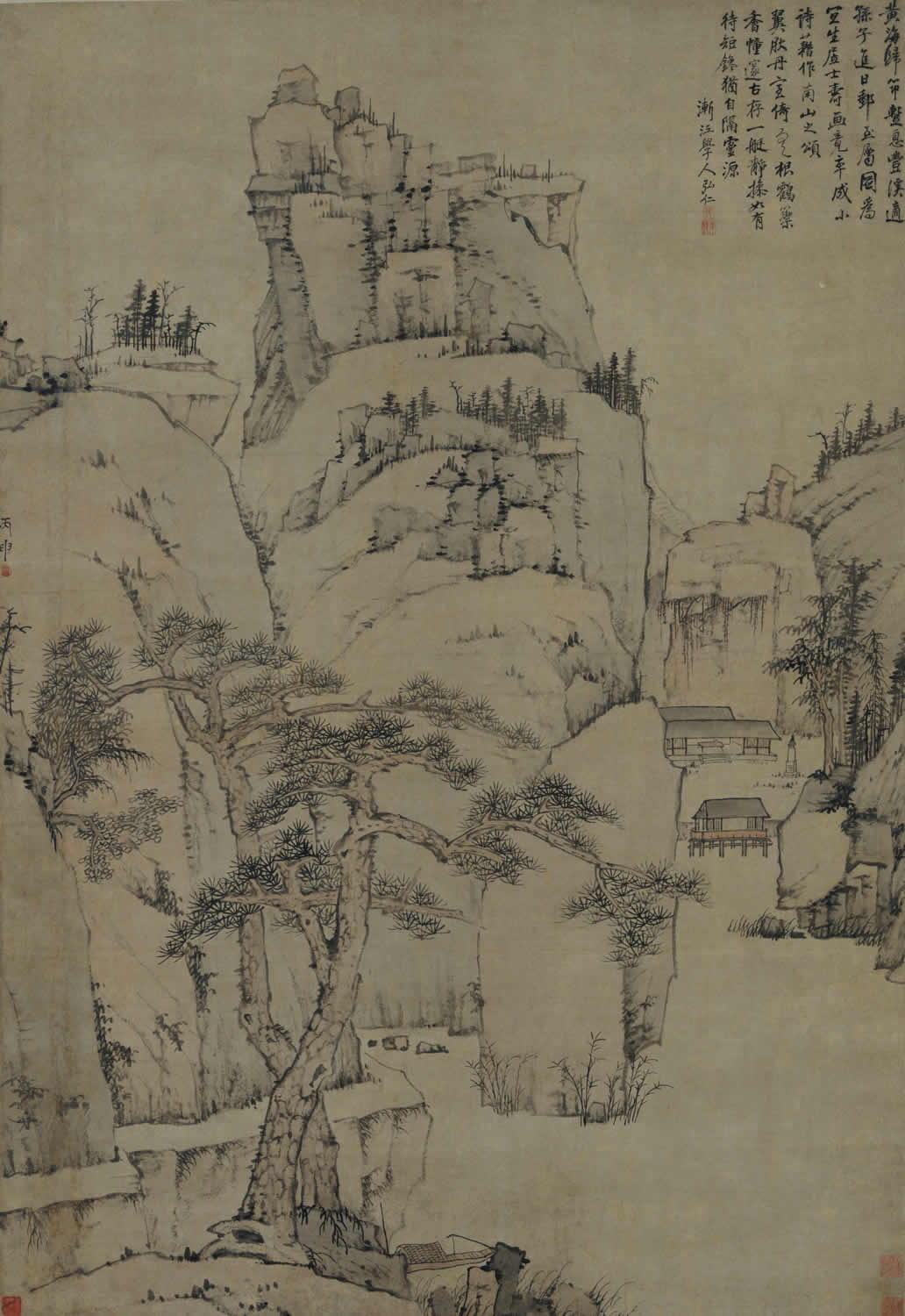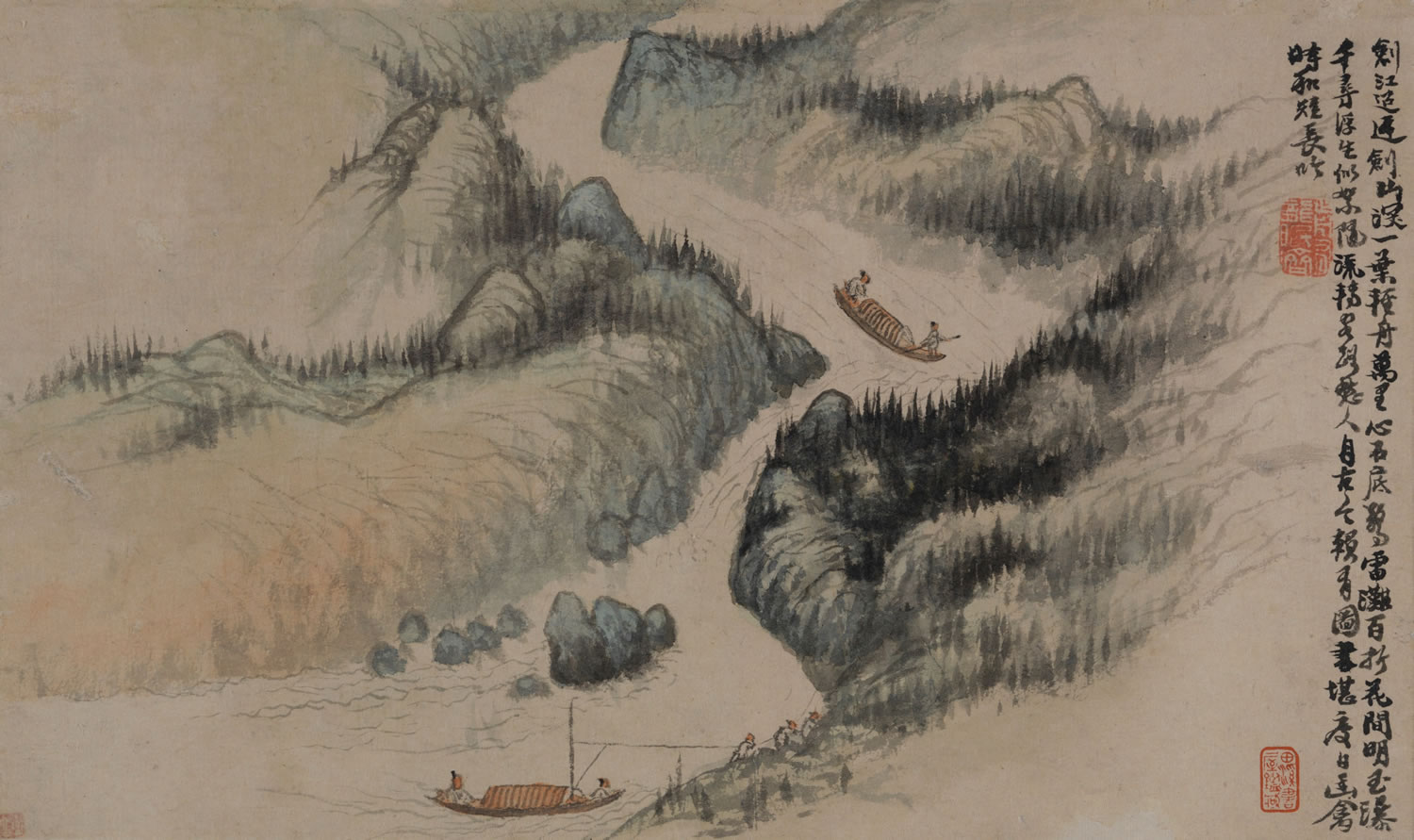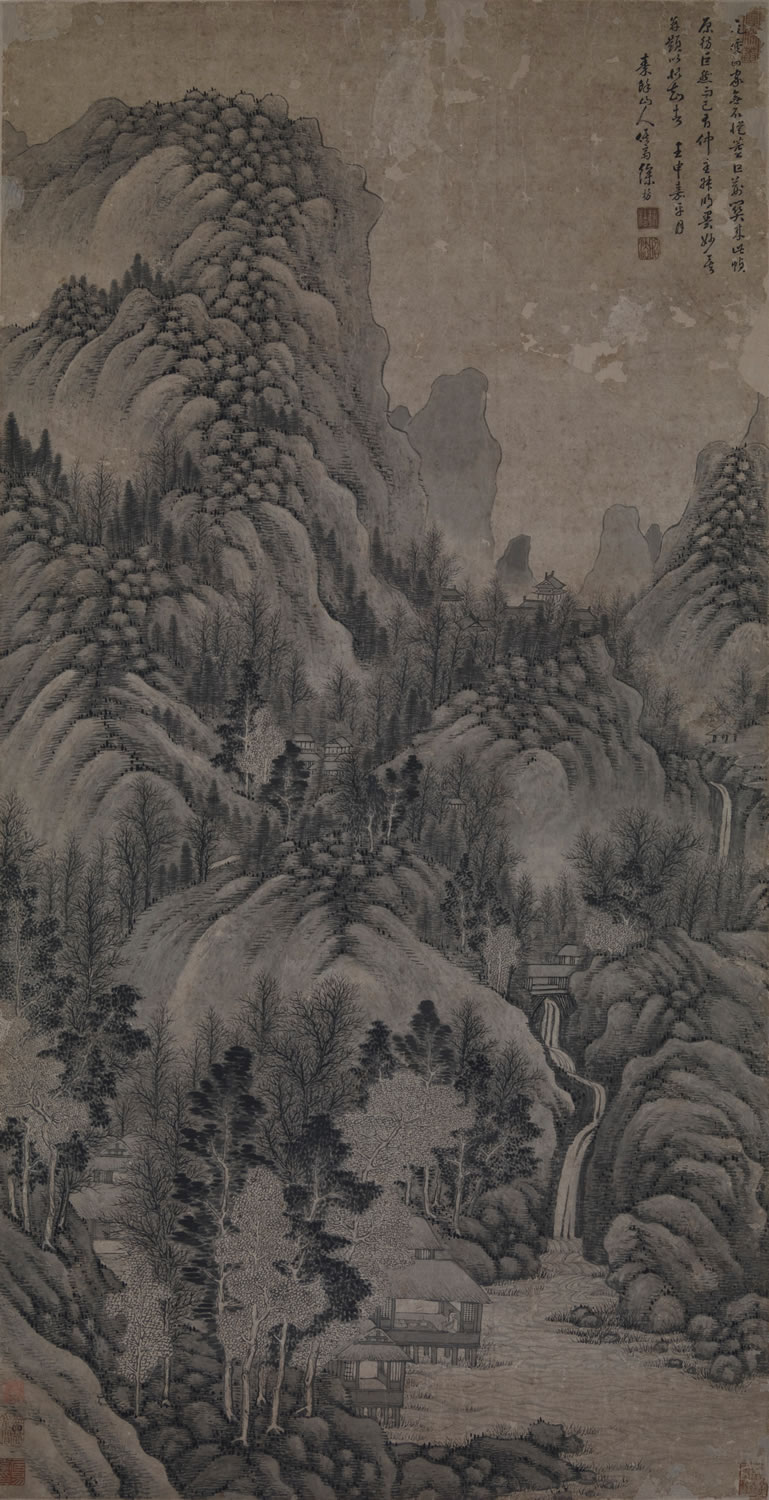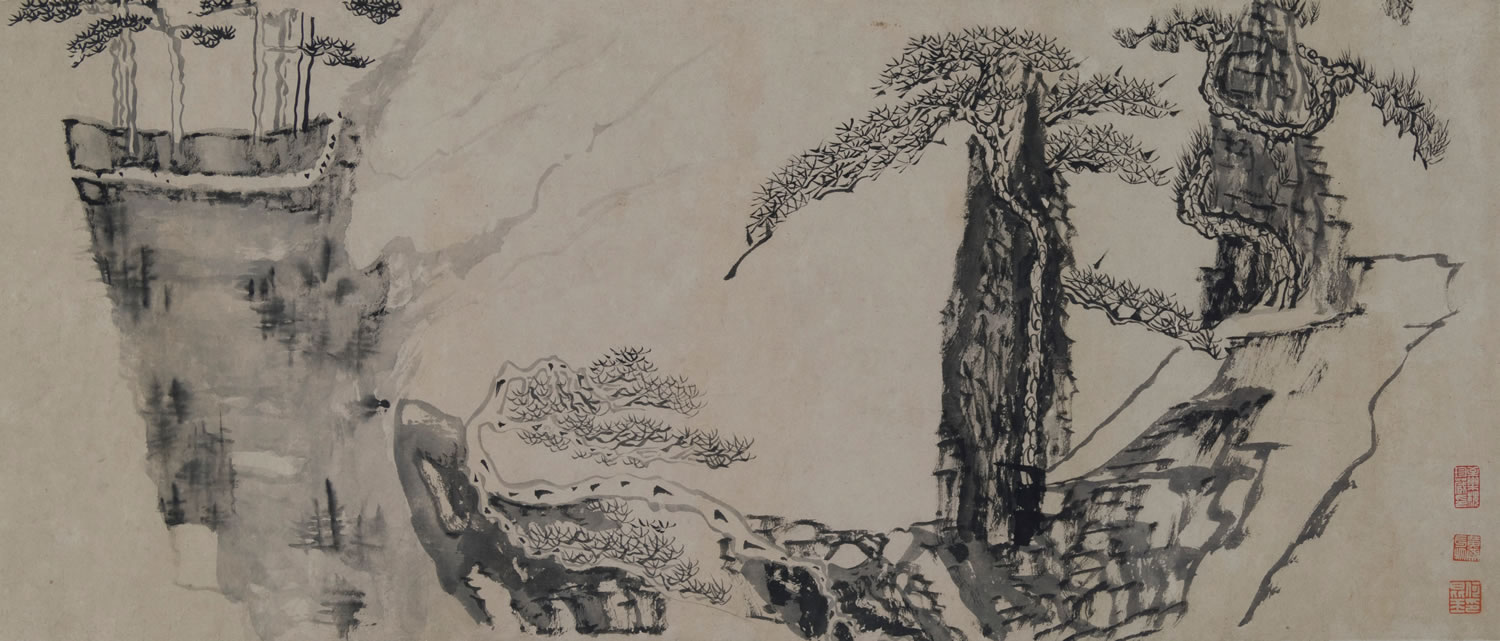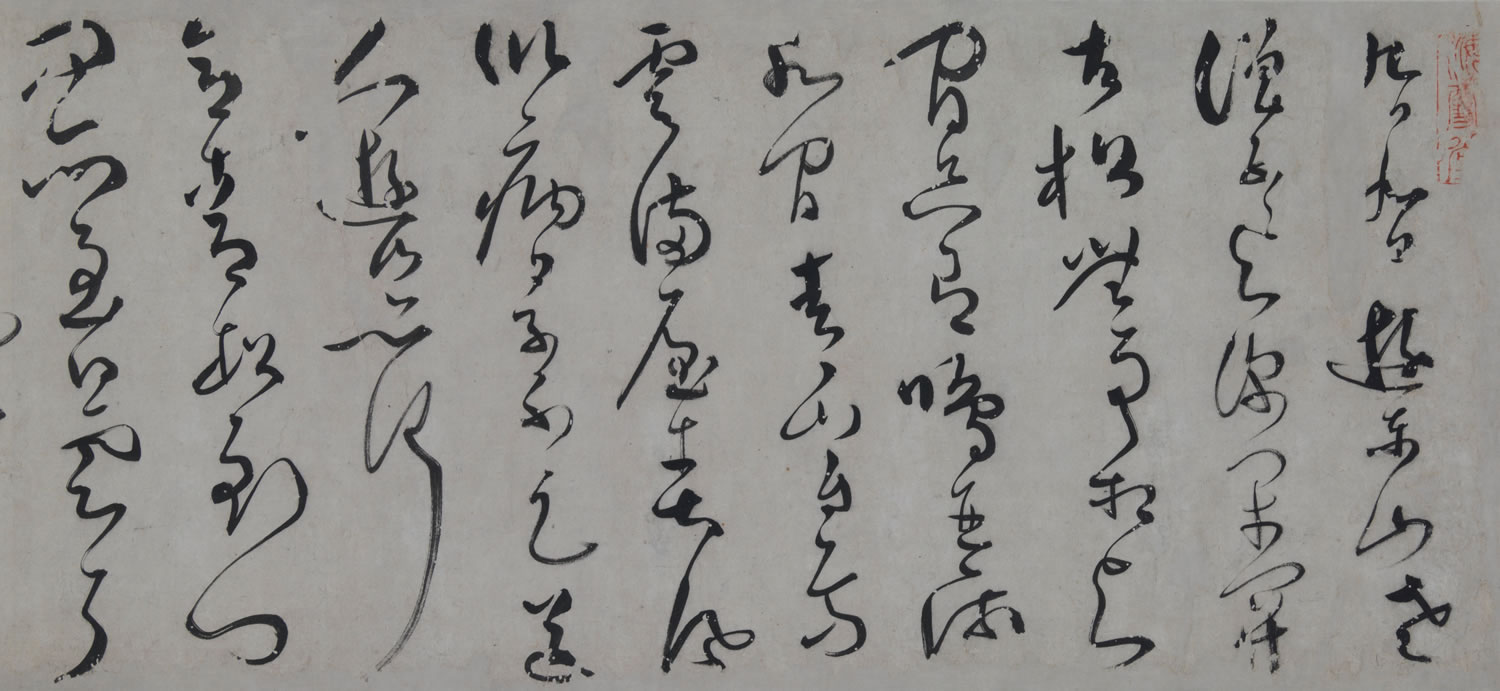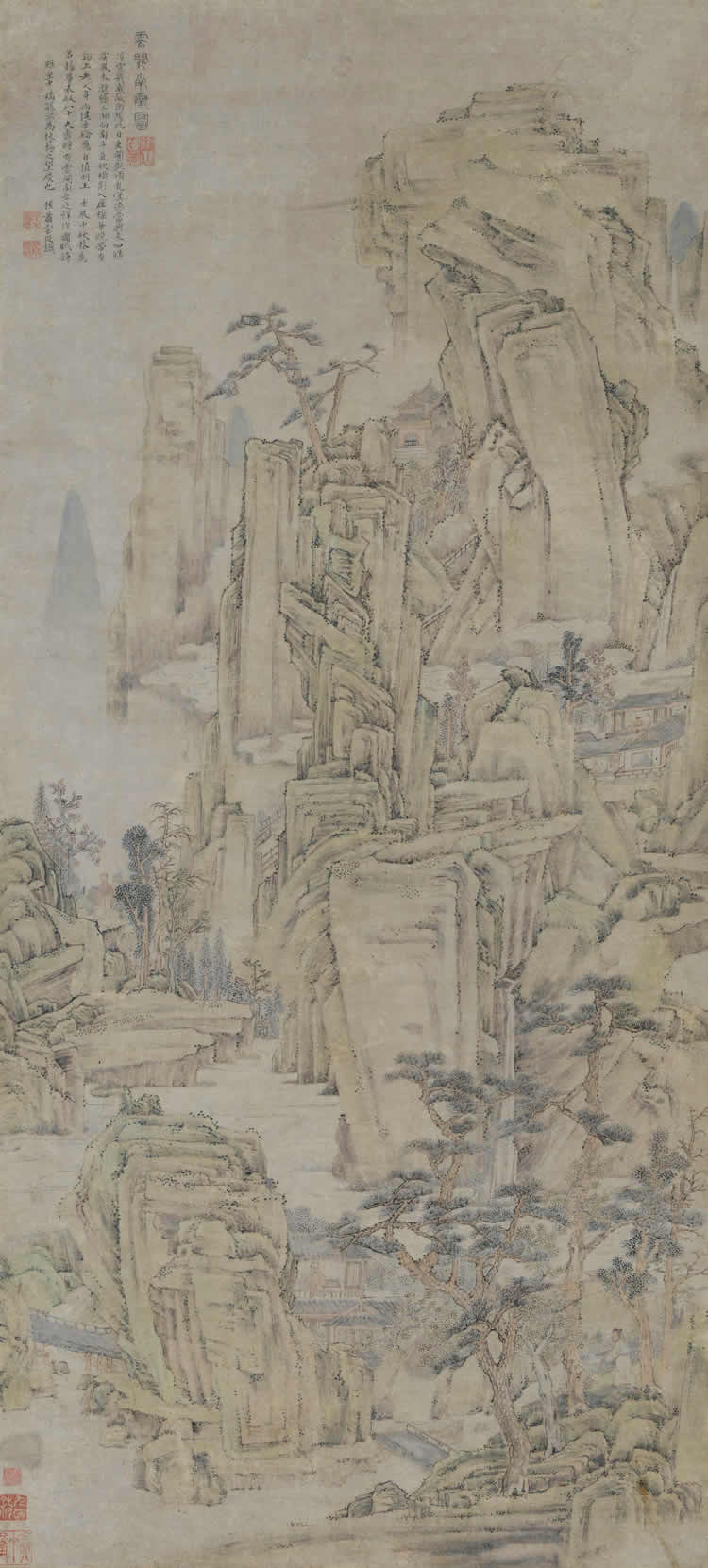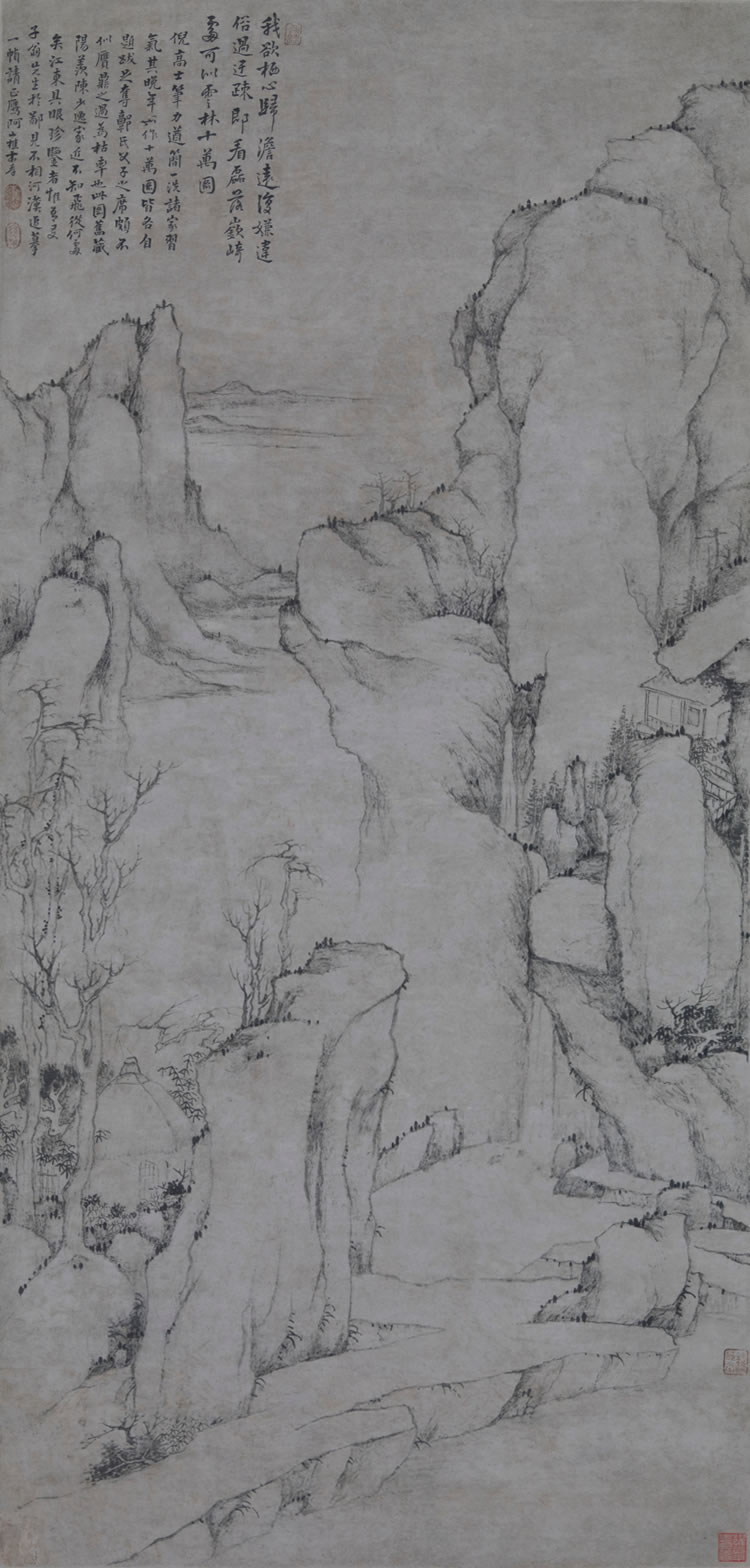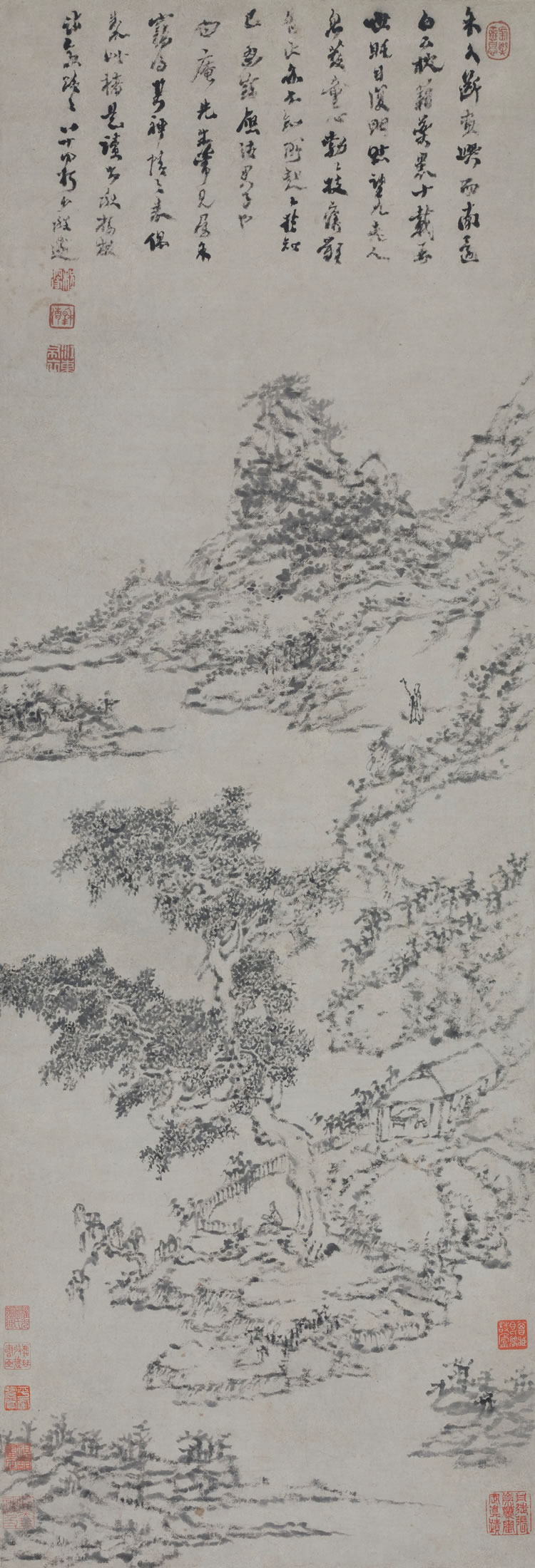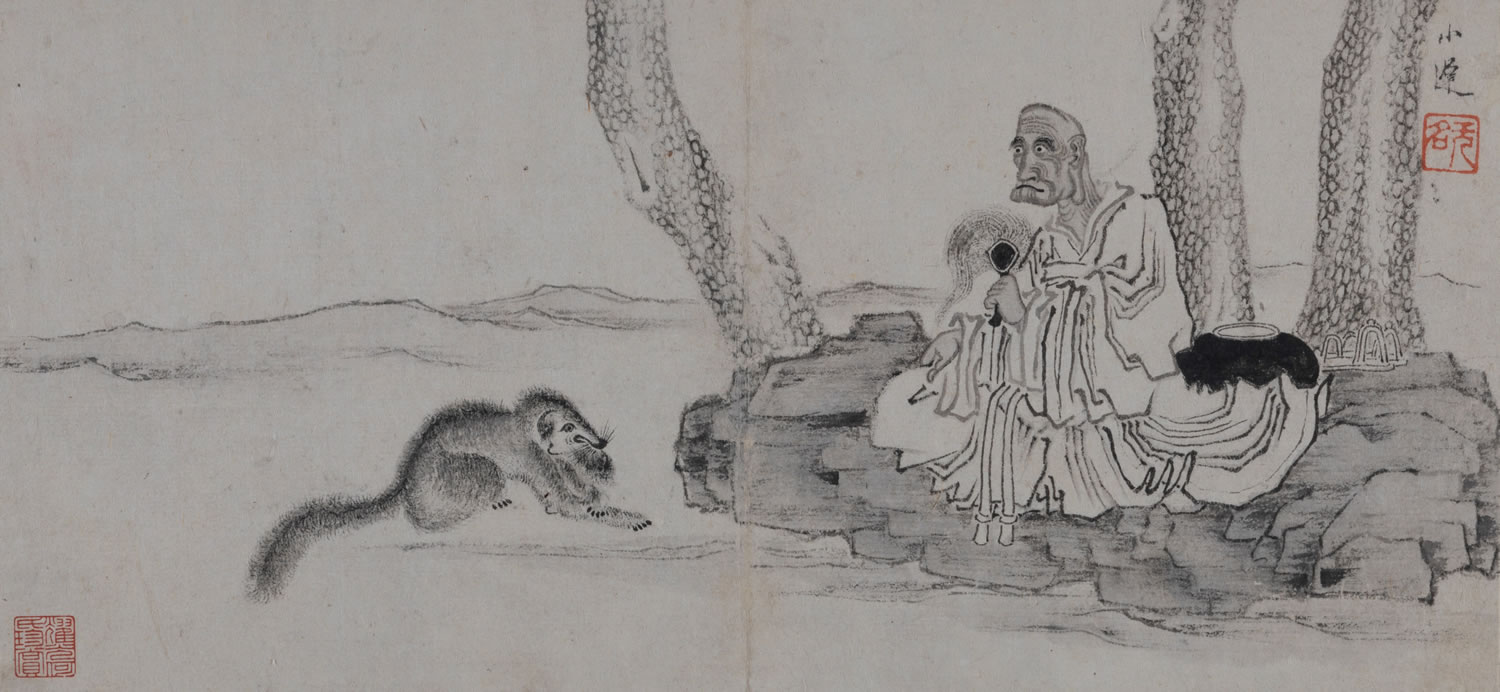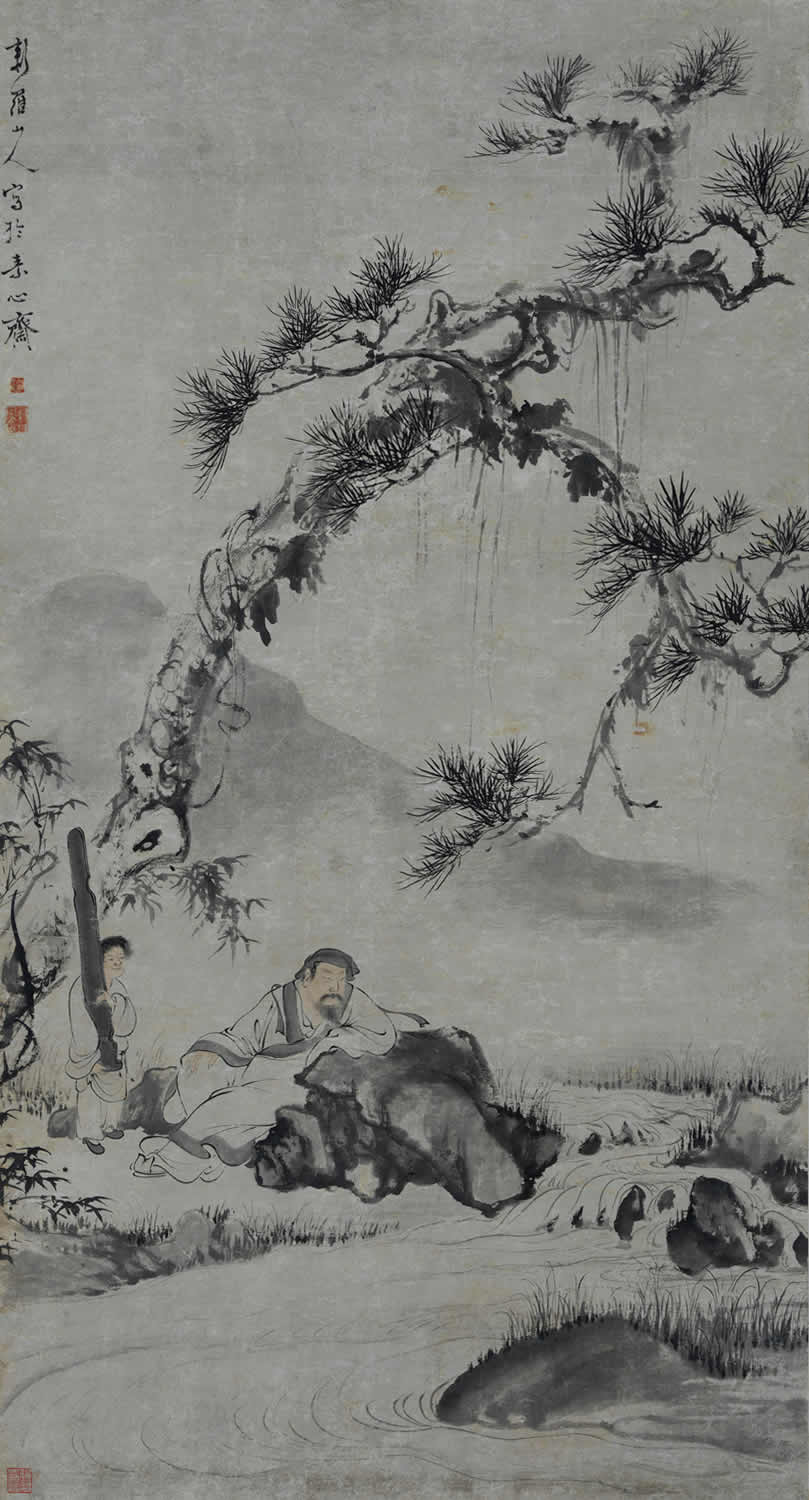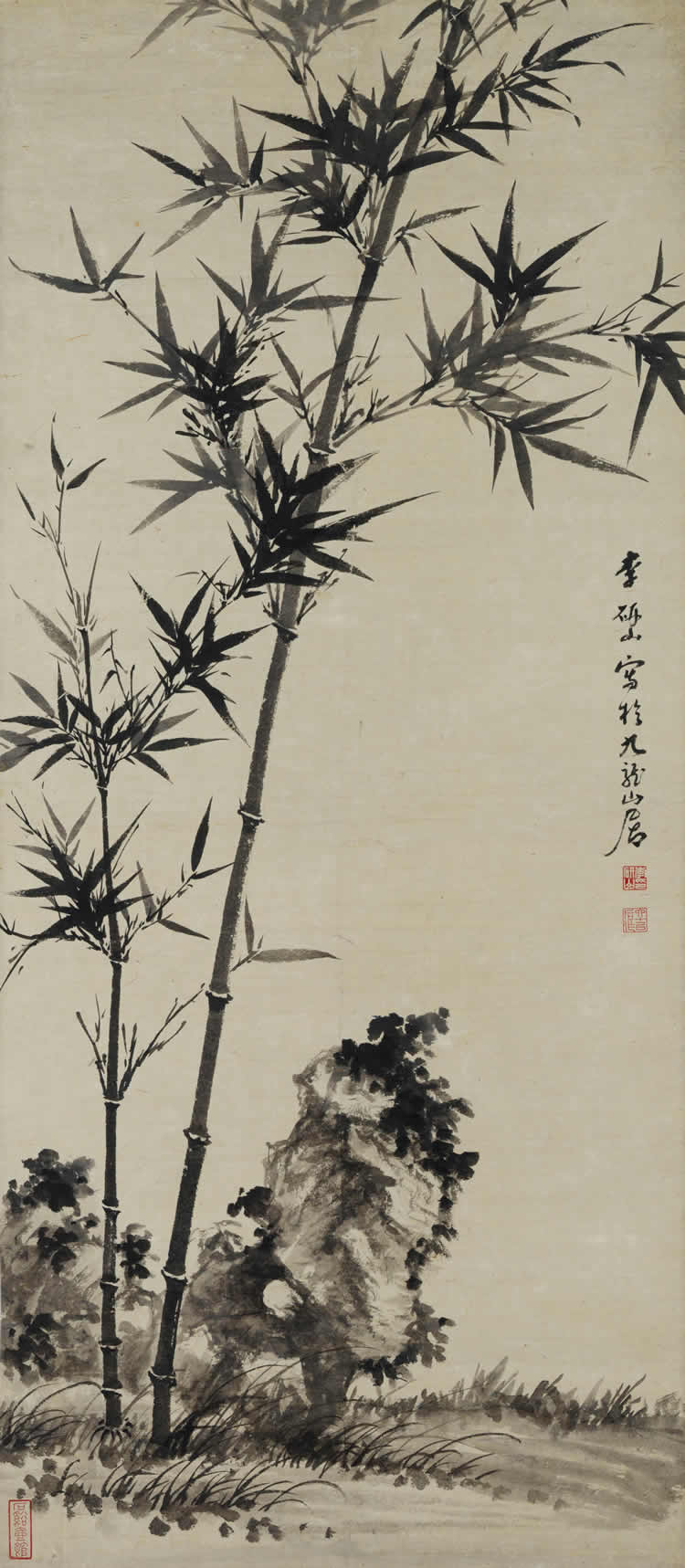 Web Content Display
Web Content Display
Chih Lo Lou Collection of Chinese Painting and Calligraphy
Ho Iu-kwong (1907 – 2006), owner of the Chih Lo Lou Collection of Chinese Painting and Calligraphy
The Chih Lo Lou Collection of Chinese painting and calligraphy was built up by the late Ho Iu-kwong (1907 – 2006), a philanthropist and passionate collector. He named his studio Chih Lo Lou, meaning "bliss" for the pleasure one derives from viewing ancient masterpieces, and also alluding to a Chinese saying that it is bliss to perform good deeds. Mr. Ho had begun collecting since the 1950s. According to his belief, the virtue and character of ancient painters and calligraphers are kept vividly alive in their works that may "spread teachings and reinforce social relationships". The masterpieces in his collection, especially those by the "loyalist" artists from late Ming and early Qing, are highly regarded by scholars and art circles around the world.
Chih Lo Lou Collection of Chinese Painting and Calligraphy
The late Ming and early Qing paintings and calligraphy in the Chih Lo Lou Collection are the most numerous and prestigious due to the special admiration Ho Iu-kwong held for artists of that period. Nearly a century between the Ming and Qing rule was stricken by warfare and turmoil. With the country struggling to ward off domestic rebels and foreign invaders, principled and patriotic members of the literati coped by immersing their feelings and emotions in travel, painting and writing. Their rectitude and nobility shines through the art works they have left behind. Mr. Ho insisted that the character of the artists should take precedence over the quality of the art works and resolved to collect only works by artists of irreproachable character. The Chih Lo Lou Collection includes works by members of the Four Monks, namely Bada Shanren and Shitao, Cheng Sui and Dai Benxiao of the Huangshan School, Cantonese loyalists Kwang Lu and Li Suiqiu, as well as Huang Daozhou, Fu Shan, Yang Wencong, Chen hongshou and Gong Xian.
Other than works by Ming loyalists, Chih Lo Lou also has a sizeable collection of Ming and Qing dynasty paintings and calligraphy, including works by members of the Four Masters of Ming, namely Wen Zhengming and Tang Yin, and their followers that reflects the supremacy of the Suzhou art circle. During late Ming, the Songjiang School of painting led by Dong Qichang advocated the theory of the Northern and Southern schools of painting and established a proprietary orthodoxy. The Four Wangs of Early Qing, including Wang Shimin and Wang Hui, followed Dong Qichang to revitalise the traditional style according to theoretical formulae. Innovative and individualistic works by Hua Yan and Jin Nong, members of the Qing dynasty Eight Eccentrics of Yangzhou, are also found in the Chih Lo Lou Collection, demonstrating the development and transformation of Chinese art.
A passionate collector, Mr. Ho was in the company of connoisseurs, painters and calligraphers, such as Zhang Daqian and Chen Rentao as well as Guangdong natives including Xiang Hanping, Li Yanshan, Huang Bore and Zheng Defen, whom he would invite to his home for regular literary gatherings. From these friends, he not only acquired some of his 20th century works but also obtained advice on collecting. The paintings and calligraphy of the Chih Lo Lou Collection not only give insight into Ho Iu-kwong's social network and his concept of collecting in tribute to Chinese culture, but also illustrates the development of Chinese painting and calligraphy and history of collecting in Hong Kong and Guangdong.
Donation to the HKMoA
In 2018, this exceedingly rare collection is being freely donated by the Ho family to the HKMoA for permanent preservation and exhibition. The HKMoA attaches great importance to this priceless gift to Hong Kong. A dedicated gallery to be named the "Chih Lo Lou Gallery of Chinese Painting and Calligraphy" is allocated to the display and appreciation of this significant donation. Various educational and academic activities are also organised to promote understanding of Chinese art history through the collection.
Selected works from the Chih Lo Lou Collection are on display in the "Seeing Art Anew: Mounting and Conservation of Chinese Painting and Calligraphy" exhibition. For details, please visit the exhibition website.
-
Little Qian in the study
-
Shen Zhou (1427 – 1509)
-
1483
-
Hanging scroll, ink and colour on paper
-
151.6 x 64.7 cm
Shen Zhou was a Suzhou artist of the Ming dynasty. A life-long recluse, he did not take part in the imperial civil service examinations, finding instead joy in reading and painting. This literary painting is typical of studio landscape painting that developed in the Yuan dynasty. The studio is depicted prominently in the foreground with trees on both sides and mountains in the distance. The key figure, a boy named Qian, is seen reading books in the studio. According to Shen Zhou's inscription, this boy of only eleven years old could recite The Works of Mencius.
Shen Zhou was born into a literati family. He studied the works of the "Four Masters of the Yuan Dynasty" and adapted painting techniques of the Zhejiang School. He affirmed the painting tradition of the Yuan dynasty, but at the same time opened up new aesthetic possibilities in a new era. A master of the Wu School, his students included Wen Zhengming and Tang Yin. Before the age of 40 Shen mainly produced small landscape paintings, his finely detailed paintings known as "xi Shen" (Shen Zhou's fine pieces). After the age of 40 he began to paint large scale works with bold brushworks, known as "cu Shen" (Shen Zhou's bold pieces). This painting, featuring bold brushstrokes of dry ink, manifests the latter freehand style that Shen cultivated in later years. -
-
Peach Blossom Retreat
-
Tang Yin (1470 – 1524)
-
Not dated
-
Handscroll, ink on paper
-
28.2 x 117.3 cm
Tang Yin, zi Bohu, hao Liuru Jushi, was a native of Suzhou, Jiangsu province. Having studied painting directly with Zhou Chen and Shen Zhou, Tang forged his individual landscape style by synthesizing the two traditions of landscape painting: the Academic Style based upon the works of the Song painters Li Tang and Ma Yuan and the literati painting tradition of the "Four Masters of the Yuan Dynasty". Together with the Suzhou literati Zhu Yunming, Wen Zhengming, and Xu Zhenqing, the scholars were known as the "Four Talents of Wu". Tang later participated in the metropolitan examinations held in the capital but was unfortunately accused of being part of a cheating scandal. He was dismissed and thrown into prison. Although subsequently released, the scandal blocked his way to officialdom. Tang Yin returned to Suzhou where he built a villa in Peach Blossom Valley, naming it Peach Blossom Retreat, and spent his days writing poetry, painting and seeking solace in wine.
In this painting, a mountain retreat is shrouded in mist above a valley surrounded by waterfalls. A scholar is depicted in the middle of the scroll sitting on a stone platform and contemplating the beautiful landscape. The content and relaxed expression of the scholar projects his desire to escape from worldly chaos into the spiritual landscape. This painting is treated in an elegant and well-structured style. He modelled the style of Southern Song painter Li Tang, layering angular rocks to form mountains. This painting was owned by the late Qing dynasty Guangdong collector Kong Guangtao, who named it after Tang Yin's residence, the Peach Blossom Retreat. -
-
Gathering fungus
-
Lu Zhi (1496 – 1576)
-
Not dated
-
Hanging scroll, ink and colour on paper
-
58.5 x 47 cm
Lu Zhi, a native of Jiangsu province, studied poetry, literature, painting and calligraphy with Zhu Yunming and Wen Zhengming and was noted as one of the most important disciples of Wen. Lu became a recluse in mid-life, devoting himself to reading and painting while residing in Zhixing Mountain. His landscape paintings reflect great influence of the Wu School, as well as the flair of Song and Yuan landscape painting.
This work features a rugged hill trail leading from a pine forest in the foreground deep into the mountain. In the centre of the painting, a red-cloaked gentleman walks across a domed rock with houseboy following close behind carrying a basket and hoe. They seek precious fungus on the misty cliffs. "Tianchi" (Heavenly Pond) in the poem title refers to Mount Tianchi, 15km west of Suzhou where the uplands are strewn with dramatic rock formations along winding hill paths. The profile of one mountain peak resembles a lotus petal, thus named Lianfa Peak. This is the summit referred to in Lu's poem. Departing from the graceful and robust style of his teacher Wen Zhengming, Lu Zhi opted to outline the rocky peaks with winding angular lines of light dry ink and infill of light ochre. The scenic trees are portrayed with fine, moist brushstrokes, in striking contrast with the weathered rock, accentuating the precarious rocky escarpments. -
-
Landscape in the style of Huang Gongwang
-
Wang Shimin (1592 – 1680)
-
Not dated
-
Hanging scroll, ink on paper
-
103.5 x 52 cm
Wang Shimin, a native of Taicang, Jiangsu province, attained Metropolitan Graduate (jinshi) in 1601 and was promoted to the post of Vice Minister of the Court of Imperial Sacrifices. His family's rich art collection and his passionate interest in traditional styles drove him to attain a consummate mastery of the techniques of the Song and Yuan masters. He started to paint at a very young age and was closely associated with Dong Qichang and Chen Jiru, from both of whom he received direct tutelage. He and his contemporary Wang Jian were ardent advocates for the revival of archaic styles during the early Qing dynasty. Wang Shimin was credited as the founder of the Loudong School of Painting, and collectively with Wang Shimin, Wang Jian, Wang Hui and Wang Yuanqi, known as the "Four Wangs."
Influenced by his teacher Dong Qichang who proposed the theory of Northern and Southern Schools, Wang Shimin specialised in literati painting of the Southern School. He was most influenced by the works of Huang Gongwang of the Yuan dynasty. This hanging scroll is typical of one of his Huang Gongwang influenced paintings. Landscaped with a foreground of slopes, terraces, bushes and houses, access to the undulating peaks beyond may be reached through tree thickets via a circular path and rugged stone steps. An unbroken chain of undulating mountains extends beyond the foreground with summits outlined in hemp-fibre textured strokes complemented by horizontal ink dots of varied density and shade forming outcrops. The pine trees and layered peaks in this painting are signature Huang Gongwang features, substantially patterned in manner. Such execution represents the Four Wangs' evolving interpretation of ancient painting styles. -
-
Landscapes
-
Zhu Da (1626 – 1705)
-
1697
-
Album of 12 leaves, ink and light colour on paper (leaf no. 2)
-
Each 23.5 x 34.2 cm
Zhu Da, also known as Bada Shanren, came from Nanchang, and was a descendant of the Prince Ning, Zhu Quan, though he became a monk after the fall of the Ming dynasty. He initially modelled his landscapes after Dong Qichang but later incorporated the styles of the Yuan masters Huang Gongwang and Ni Zan so that his landscapes are tinged with a sense of wintry desolation. His bird-and-flower paintings, characterized by simplified and abstract forms executed with vigorous and expressive brushwork, were derived from the styles of the Ming masters Chen Chun and Xu Wei, both of whom were noted for painting flowers and birds in the spontaneous style. Zhu Da, Hongren, Kuncan and Shitao were celebrated as the "Four Monks".
This album contains twelve leaves of landscape paintings. The artist did not date the paintings himself, but the inscriptions by the album's owner, Huang Yanlü inform us that he managed to buy this album from the artist for a huge sum in 1697. The eleven landscape paintings differ in choice of subject, composition, and painting style. The first leaf, for example, depicts a lone boat moored by the shore. A few sparse-looking trees stand nearby, recalling the minimalist painting style of Ni Zan. The second leaf depicts a cottage next to a dense forest and a rapid waterfall. With mountain rocks and trees that fill the frame and the moist, heavy use of ink, there is a sense of weightiness that reminds one of the art of Dong Yuan. On the seventh leaf is a large forest. The rounder mountain rocks, the gentle rolling knolls on the cliffs and the articulation of barren branches show the influence of Huang Gongwang and Dong Qichang. -
-
Cinnabar chamber deep in the mountains
-
Hongren (1610 – 1664)
-
1656
-
Hanging scroll, ink and light colour on paper
-
150 x 103.5 cm
Hongren was ordained as a monk after the fall of the Ming, then he adopted the Buddhist name Hongren. He was a native of Shexian, Anhui province. After Jinling (Nanjing) was overrun by the Manchu, he fled to the southeastern coastal province Fujian where he followed the Buddhist master Guhang Daozhou to Mount Wuyi and became a monk. He returned to his home in Shexian and resided in Mount Huang after extensive travelling across the nation. He first followed the painting styles of the Song masters, then adopted the styles of the "Four Masters of the Yuan Dynasty" as the model for creative imitation and showed a profound interest in the style of Ni Zan. Together with Shitao and Mei Qing, who were equally accomplished in painting the Mount Huang, they are regarded as the leading figures of the Huangshan School of Painting. Besides, he is also regarded as the pioneer of the Xin'an School of Painting. Together with the monks Kuncan, Zhu Da and Shitao, they are collectively known as the "Four Monks".
The painting was made when the artist, then forty-six, was on a visit to Mount Huang with his friend Wang Jiazhen. The title "cinnabar chamber" used to be an allusion to temples in classical China. Shrouded in mists and in the depth of mountains, the temple hidden behind overhanging cliffs in the painting can be reached by the trail adjacent to the small boat moored next to two pines in the foreground. The scantily textured motifs in light colour are primarily geometric and angular in form. The manmade trail, temple and boat are contrasted markedly by an absolute absence of men, inviting the viewer to share the sheer sense of solitude and tranquility that has claimed the heart and soul of the painter in seclusion. -
-
Landscapes
-
Lan Ying (1585 – ca. 1664)
-
1650
-
A set of 12 hanging scrolls, ink and colour on golden paper
-
Each 167 x 44.6 cm
Produced when the Ming painter was sixty-five, this set of twelve hanging scrolls is basically an attempt to emulate various Tang, Song and Yuan masters. The first piece Plum blossoms in spring, for instance, resembles the blue-and-green style landscape by the Yuan master Zhao Mengfu; the fourth piece Splashes in the depth of woods evokes the skilled and lyrical composition of Huang Gongwang, also from the same dynasty, while the tenth piece Monastery in remote mountains carries traces of the Northern Song master Li Cheng in the razor-sharp cliff faces.
Born of humble origins, Lan Ying acquired his painting skills from a folk artist and practiced painting as a professional all his life. Of all the Tang, Song and Yuan masters that he had modelled on, Huang Gongwang had by far left the most visible marks in his works. Lan was so accomplished in painting that he had great influence over the "Eight Masters of Jinling" of the late Ming and has come to be regarded as a leading exponent of the Wulin School and a torchbearer of the Zhe School. -
-
Landscapes depicting poems of Huang Yanlü
-
Shitao (1642 – 1707)
-
1701 – 1702
-
Album of 22 leaves, ink and colour on paper (leaf no. 4)
-
Each 20.5 x 34 cm
Shitao was a descendant of Prince Jingjiang of the imperial clan of the Ming dynasty. He became a monk after the fall of the Ming dynasty. He befriended Mei Qing who lived in Anhui province and his early landscapes were influenced by Mei's painting style; both were regarded as leading figures of the Huangshan School of Painting. In his later years, Shitao settled in Yangzhou and became a close friend of Zhu Da, each achieving fame as a member of the "Four Monks".
Twice a visitor to Lingnan and places as remote as Guangxi and Hainan, the late Ming poet Huang Yanlü celebrated the picturesque views he saw in his poems. Some of his poetic works on his travels in Fujian and Guangdong in turn became the inspirations of Shitao's paintings, which are largely imaginative reinterpretations. This album is a late-year work by the artist in Yangzhou.
The author of the famous saying "To travel extensively in search for the most wonderful landscapes", Shitao had his eyes fixated on the wonderful in his attempts to draw creative inspiration from extraordinary landscapes. The impressive Lingnan vistas described in Huang Yanlü's poems provided him with the perfect context for bringing his creativity to life. With the diversity of the views in mind, the artist chose to employ a large variety of techniques to enhance the poetic and amazing appeal of his landscapes which can be meticulous or expressive in style, portrayed with a dry brush or washes, or lightly coloured or simply in ink. -
-
Landscape in the style of Juran
-
Xu Fang (1622 – 1694)
-
1693
-
Hanging scroll, ink on paper
-
142.5 x 73.2 cm
Xu Fang lived during the apex of Dong Qichang's dissemination of the theory of Northern and Southern Schools. This held great influence over Xu's landscape painting, modelled mainly on masters of the Song and Yuan dynasties, such as Dong Yuan, Juran, Ni Zan and Huang Gongwang. This work is in the style of Juran but only in essence. Consequently, the compositional layout, such as peaks, trees, pagodas and streams, focuses solely on replicating Juran's method of composition and ink work, in a complex and refined painting of meticulous brushstrokes. By contrast, a work from the Chih Lo Lou Collection by Yun Xiang of the same period follows Juran's style with simple impressive brushstrokes. It shows that artists painting in Juran's style have their own individual brushwork expression, which may be sophisticated or simplistic.
Xu Fang lived during the transition from Ming to Qing dynasty. His father committed suicide in loyalty to the Ming dynasty. Following his late father's instruction, Xu Fang lived as a recluse in the rural foothills of Mount Tianping, never again setting foot in the city. He specialised in running and cursive scripts and landscape painting, selling his art to provide an autarkical life. -
-
The green of late spring
-
Gong Xian (1619 – 1689)
-
1671
-
Hanging scroll, ink on paper
-
143 x 70 cm
This portrayal of a lakeside scene was painted when Gong Xian was fifty-two. In the foreground, on one end of a bridge is a bank where four trees tower over solitary and seemingly uninhabited hamlets. Beyond them, the water extends without interruption, except for the stretches of rushes, to reach the mountains in the distance. The simple composition acquires a sense of volume and perspective from the disparate clusters of motifs and the contrast between the light and the dark through apt manipulation of ink.
Born in the war-ravaged late Ming, Gong Xian lived in seclusion in Nanjing in his late years, selling paintings and giving painting lessons. His landscapes stand out with their original composition and rich associations. Another distinctive feature is the stark contrast between black and white, which earns his landscapes the epithets of "The White Gong" and "The Black Gong". The technique of accumulative ink employed for the effect has had far-reaching influences on later painters. -
-
Pines and rock
-
Huang Daozhou (1585 – 1646)
-
Not dated
-
Handscroll, ink on paper (section)
-
28 x 284 cm
A renowned writer and calligrapher from the late Ming, Huang Daozhou was demoted and transferred to Guangxi for speaking out against a secret negotiation for peace with the Qing troops. In retaliation, he resigned and later took up teaching in Fujian and Guangdong. Upon the collapse of the Ming, he joined anti-Qing movements initiated by the Southern Ming and even formed an army of volunteers with his own funds. When captured, he refused to surrender and was finally beheaded in Nanjing. Just before his execution, he painted a pine with rocks as a gift to a friend and left behind a note in blood reading "The legitimate and the righteous shall forever prevail" to his family.
Huang's art and writings, especially his paintings of pines and rocks, have widely been regarded as embodiments of integrity. This scroll in four sections depicts the pines growing at famous scenic spots on Mounts Huang, Tianmu and Tiantai. Be they towering, crouching or braving the wind, these pines serve to project the painter's steadfastness in upholding his principles. -
-
Poems in cursive script
-
Kuang Lu (1604 – 1650)
-
Not dated
-
Handscroll, ink on paper (section)
-
11.6 x 196 cm
Kuang Lu, an acclaimed poet and calligrapher widely admired in Guangdong in the late Ming, was most celebrated for sacrificing himself for his country. It was he who led other generals of the Southern Ming to defend Guangzhou against Qing invasion for as long as over ten months. When the city finally fell, instead of admitting defeat, he returned to his residence and quietly waited for his enemies with his collection of ancient artifacts, paintings and calligraphies by his side.
Like the artist, his calligraphy was bold and unrestrained. This scroll expresses the calligrapher's sorrow at the sight of his land at the end of a climb with friends. In the poem, he laments at how empires have fallen into oblivion as told in history. Naturally, for a literatus whose prime coincided with the last breaths of his empire, success was no more than a remote dream. This is why the poet prefers to make the most of what he can rather than wallowing in his own misfortunes. These sentiments and the poet's pride are aptly melded into the spontaneous calligraphy that is tinged by the styles of both the Tang master Huaisu and the Song master Mi Fu. -
-
Poem in running-cursive script
-
Chen Zizhuang (1597 – 1647)
-
Not dated
-
Hanging scroll, ink on satin
-
189 x 54 cm
Like Kuang Lu, Chen Zizhuang was a member of the intelligentsia from Nanhai, Guangdong during the late Ming period. Chen earned his jinshi title, but was later removed from office for criticizing the powerful and corrupt eunuch Wei Zhongxian. He was restored to office in the early years of the Chongzhen reign, but was soon removed again and imprisoned for criticizing the court. After the Ming fell, he devoted himself to the Southern Ming resistance against the Qing. He led an army to fight against the Qing forces in Guangzhou and was defeated and captured. He was eventually executed for refusing to surrender. In his lifetime, Chen had shown himself to be an upright character who never hesitated to speak the truth, but eventually he died a martyr. His character and deeds were much admired, and his poetry, prose, calligraphy and paintings have been praised in the arts circles of Guangdong.
This piece of calligraphy shows lucid, flowing brushstrokes. The poem is divided into three lines in this vertical scroll, with characters freely changing in size but in a reasonable, rhythmic flow. The composition is typical of late-Ming calligraphy. Unlike the exaggerated clustering and ink-play effects of late-Ming calligraphers such as Wang Duo, his style is rather closer to the plainer and more natural Dong Qichang.
Ho Iu-kwong found Chen Zizhuang's calligraphy exuding the aesthetic qualities of being "plainly natural" and "mellow with a scholarly air". For Ho, a calligrapher's moral character is of the utmost importance. This is why he commended Chen's upright character in a chaotic and dangerous age, which not only deserves our respect, but should also be a positive influence on society. -
-
Southern peak without cloud
-
Xiao Yuncong (1596 – 1669)
-
1652
-
Hanging scroll, ink and colour on paper
-
122.5 x 55.5 cm
Xiao Yuncong, a member of the Revival Society in the late Ming, devoted himself to painting and calligraphy upon the collapse of the Ming. This landscape was painted around the Mid-Autumn Festival as a birthday gift to the artist's uncle. The mountains in the painting are formed by stacks of rectangular motifs which are scantly textured and lightly coloured in green and ochre. The bridge, trails, hamlets and monastery skirting the precipices guide the viewer from the bottom to the top while he is being transported into that enchanting imaginary landscape.
Deriving his painting skills from Ni Zan and Huang Gongwang of the Yuan and the Wu School of Painting of the Ming, Xiao Yuncong succeeded in developing his personal style distinguishable by the dry and angular brushwork, which is partly attributable to his involvement in woodblock prints. Although similar to those by Hongren in the tranquility evoked, Xiao's landscapes are very often not devoid of figures. -
-
Landscape in the style of Ni Zan
-
Dai Benxiao (1621 – 1693)
-
Not dated
-
Hanging scroll, ink on paper
-
127.5 x 61.3 cm
To the left of the flat bank in the foreground is a thatched cottage shaded by some slender trees. Further up, another dwelling half hidden behind precipitous cliffs faces a tumbling waterfall in the middle ground. The vista portrayed in ink is on the whole rather open with the rocks slightly textured with a dry brush. The bare trees and the bald rocks suggest that it is a landscape in winter. The desolation is further emphasized by the absence of figures in the entire painting.
Dai Benxiao, whose father was killed defending his country from Manchu invasion, chose to lead a hermitic life and to relish in art rather than rendering his service to the new court. This painting, done when the artist was about seventy, is professed to be after Ni Zan's The ten myriads but the resemblance lies only in the atmosphere since the style is entirely Dai's own. This tallies with what is said in the seal mark: "My methods for my own employment". Separately in one of his poems, Dai has similarly stressed the importance of internalizing what one has acquired direct from Nature for painting since, to him, landscapes are in effect the means for divulging his thoughts and feelings. -
-
Reading under an autumnal tree
-
Cheng Sui (1607 – 1692)
-
1690
-
Hanging scroll, ink on paper
-
90 x 31 cm
The two figures in the painting provide this landscape with an interesting narrative. The reader under the tree in the foreground should most probably be the owner of the fenced lodge behind him. Further up the painting, another figure with a staff is descending from the mountain, apparently on his way to pay the reader a visit.
The painter Cheng Sui regarded himself a leftover subject and lived as a professional painter, calligrapher and seal carver in Yangzhou and Nanjing. Done when he was already at the advanced age of eighty-four, this landscape, primarily monochromatic, strikes with its rich tonal gradation and stark contrast. The dry brush, scorched ink and angular strokes seen in the rocks are so vigorous that the rocks seem to have been carved out by a knife. The trees in the foreground are executed with the calligraphic brush method of the cursive script reminiscent of Li Cheng of the Song and emit a charmingly archaic flavour. It is learned from the inscription by the artist that this was a whimsical work painted after a long break. The seal mark reading "endless felicity" can perhaps be taken as a self-revelation of what old age and art meant for the artist. -
-
Miscellaneous subjects
-
Chen Zi (1634 – 1711)
-
Not dated
-
Album of 8 leaves, ink on paper (leaf no. 4)
-
Each 16 x 33.5 cm
Chen Zi was the fourth son of Chen Hongshou. A master of calligraphy and painting also proficient in poetry. Following the fall of the Ming dynasty, he chose not to pursue an official career. Chen's painting style was influenced by that of his father. Apart from figurative painting, the younger Chen was also adept in all other subjects, including flowers, birds, plants, insects and landscape. Compared to his father Chen Hongshou, who was an iconic figure in the transformed painting movement of the late Ming dynasty, Chen Zi's works are more subtle and restrained. Chen Hongshou's paintings were true to family tradition and have had significant influence on future generations.
This album comprises paintings of many different subjects. The overall artistic style is aloof and restrained. The tortuous trees and rocks convey a primitive charm. Lines are rigid like iron wire. A dry brush to create fluffiness lightly evokes animal fur. Human figures have exaggerated faces and individual expressions. As this album is known to have been part of the private collection of Guangdong collector Ye Menglong, it would have been circulating in Guangdong since the mid-Qing dynasty. -
-
Listening to the stream
-
Hua Yan (1682 – 1756)
-
Not dated
-
Hanging scroll, ink and colour on paper
-
134.6 x 73 cm
Hua Yan was born into a family of reduced circumstances in Shanghang, Fujian province. He received only a few years of schooling before joining his father to work in the local paper mill. Hua Yan moved to Hangzhou in 1702 – 1703, thereafter settling in Yangzhou. Here he earned a living as a professional painter and developed close friendships with local artists and scholars, particularly Gao Xiang and Jin Nong. Equally proficient in landscape, figure, flowers, birds and animal painting, his highly acclaimed bird-and-flower paintings synthesized the artistic merits of the masters of this genre, including Chen Chun, Zhou Zhimian and Yun Shouping. He was able to capture both the naturalistic details and the inner resonance of the subject. His style was fresh, elegant and charming and exerted considerable influence on the contemporary bird-and-flower-painting scene.
This work is set against distant peaks, a rock face with pine trees stands in the foreground. Leaning against a rock, a literati gentleman sits gracefully by a stream. His servant stands next to him with a zither. The learned man looks composed, gazing at the running stream and listening to the sound of water under a pine tree. Hua Yan's figure technique clearly manifests influence from Chen Hongshou of the Ming dynasty. The clothing drapery is neat, fluid and the modelling precise. Dry and wet ink work is artfully mixed to create a tranquil and verdant scene that amplifies the peaceful disposition of its figures. This work reflects Hua Yan's sophisticated skill in portraying human figures. Such elegant themes were well tuned to the taste of the contemporary wealthy merchants of Yangzhou. -
-
Splashed-colour landscape
-
Zhang Daqian (1899 – 1983)
-
1966
-
Hanging scroll, ink and colour on paper
-
86.5 x 50.8 cm
Zhang Daqian created this painting to celebrate the 60th birthday of Ho Iu-kwong, founder of the Chih Lo Lou Collection. The artist blended a bold splashed-colour technique with traditional blue-and-green landscape style. Retaining figurative expressionism in a near abstract composition, he created a "likeness and unlikeness" effect, leaving the viewer to feel the artistic concept of a landscape with much larger use of imagination. Zhang Daqian's use of this form of expression became increasingly well established during the 1960's. As a result, Chinese painting took on a new look in the 20th century.
Zhang Daqian, originally named Yuan, was a native of Neijiang, Sichuan province. In 1917, Zhang with his elder brother Shanzi, studied painting as well as the craftsmanship of dyeing and weaving in Japan. After returning to Shanghai in 1919, he studied poetry, calligraphy and painting as a student of Zen Xi and Li Ruiqing respectively. Between 1941 and 1943 Zhang stayed in Dunhuang to copy the ancient cave frescoes, followed by sojourns in Brazil, America and other parts of the world, until he finally settled down in Taiwan in 1977. Proficient in diverse artistic styles, he was a master of figurative, bird and flower as well as landscape painting. Empowered by excellences of the ancient artists, Zhang Daqian was a consummate painter of worldwide acclaim. In later years, Zhang delighted the art world with a new approach of splashed-ink and splashed-colour landscapes in blue-and-green. -
-
Twin bamboos
-
Li Yanshan (1898 – 1961)
-
Not dated (after 1957)
-
Hanging scroll, ink on paper
-
116.2 x 50.8 cm
Li Yanshan was born into a prestigious family of Guangdong province. Greatly influenced by his father Li Zaiping, a lover of art and literature and his art teacher Pan He, Li developed a strong passion for Chinese painting. After secondary school, he was admitted to the Faculty of Law at Peking University. Returning to Guangdong in 1925, he attended Chinese painting seminars hosted by Pan He and other masters of the traditional school and was appointed headmaster of Guangzhou Municipal School of Fine Arts. As an artist, Li Yanshan would have far-reaching influence on the development of art in Guangdong and Hong Kong. At the onset of the Second Sino-Japanese War, he fled to Hong Kong. There he founded Feng Yan Studio in Wanchai with fellow artist Li Fenggong, training art students and creating their own paintings. For the next decade, Li Yanshan voyaged through Hong Kong, Macau and Xinhui, returning to Hong Kong in 1948 where he settled permanently in a stone bungalow in Ha Yuen Leng, Diamond Hill, Kowloon. From that time, most of his paintings were signed "dwelling in Kowloon hills." This twin bamboo ink painting is from that epoch.
According to the bequeathed personal notes of Li Yanshan, he took great effort to replicate Book of Bamboo Paintings and Book of Ink Bamboo by Yuan master painter Li Kan who specialised in painting bamboo. Not only did Li Yanshan try to analyse the ancient master's grasp and technique in portraying bamboo, he also modelled himself after Li Kan who found moral sustenance in painting bamboo. This painting has the natural realism and elegance seen in works of Yuan dynasty painters. The joints, branches and leaves of the bamboo are vigorous and upright; the shades of ink vary; wet and dry brushwork is expertly controlled. The fine and slender bamboo stalks display a noble resilience. -
Little Qian in the studyPeach Blossom RetreatGathering fungusLandscape in the style of Huang GongwangLandscapesCinnabar chamber deep in the mountainsLandscapesLandscapes depicting poems of Huang YanlüLandscape in the style of JuranThe green of late springPines and rockPoems in cursive scriptPoem in running-cursive scriptSouthern peak without cloudLandscape in the style of Ni ZanReading under an autumnal treeMiscellaneous subjectsListening to the streamSplashed-colour landscapeTwin bamboos
